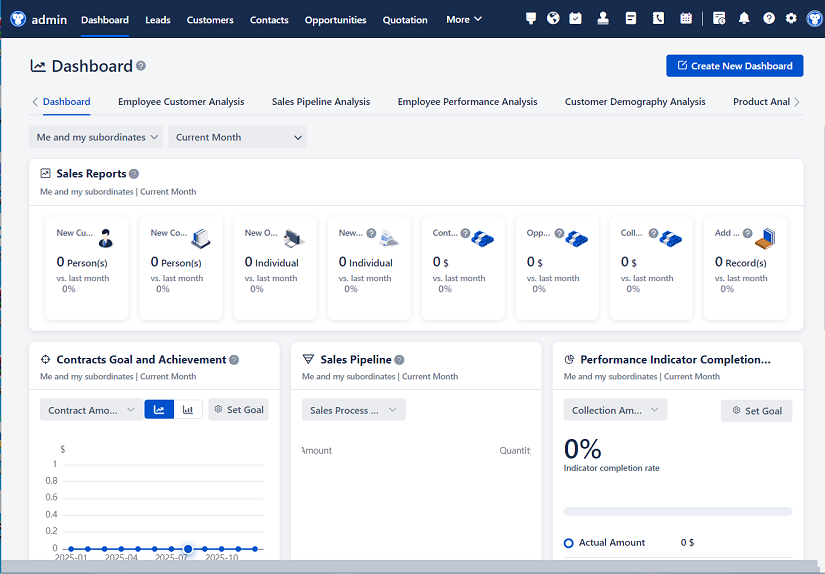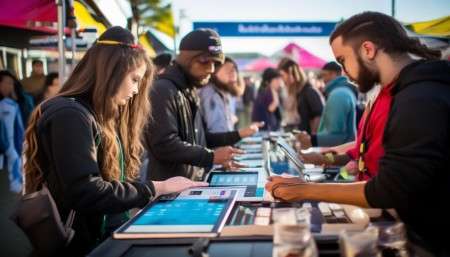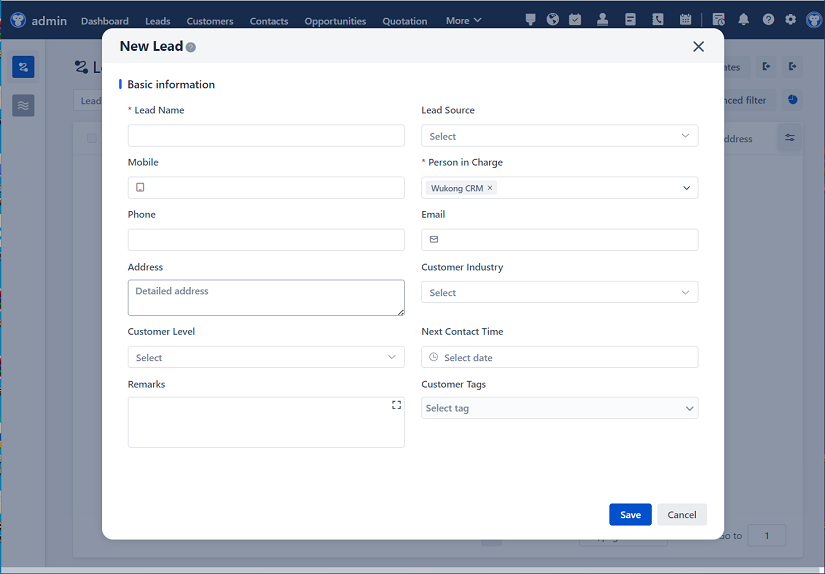
△Click on the top right corner to try Wukong CRM for free
You know, when I first started looking into how fashion brands manage their customers, I was honestly surprised by how messy it all seemed. I mean, you’d think with all the glitz and glamour, everything behind the scenes would be just as polished, right? But the truth is, a lot of fashion companies—big names included—are still struggling to keep up with customer expectations because they’re using outdated tools or, worse, spreadsheets. Can you believe that? Spreadsheets in 2024?

So, I started digging deeper, and that’s when I came across something called a CRM system—Customer Relationship Management. At first, I thought, “Oh, isn’t that just for sales teams?” But no, not anymore. Especially not in the fashion world. A good CRM today does way more than just track who bought what. It actually helps brands understand their customers on a personal level. Like, imagine knowing exactly when your customer usually shops, what styles they love, even what colors they tend to avoid. That kind of insight? That’s gold.
And here’s the thing—fashion is emotional. People don’t just buy clothes; they buy identity, confidence, expression. So if a brand can connect with someone on that level, it builds loyalty. And that’s where a solid CRM comes in. It’s not just about data—it’s about relationships. I remember talking to this boutique owner in Milan, and she told me, “When my client walks in, I already know her size, her favorite designer, even the last dress she returned.” That’s not magic—that’s a CRM doing its job.
But let’s be real—not all CRMs are created equal. I’ve seen some systems that look fancy but are so clunky to use that employees end up avoiding them. And if your team isn’t using the CRM, then what’s the point? You might as well go back to sticky notes. The best ones are intuitive, mobile-friendly, and actually save time instead of wasting it. Like, why should a sales associate have to log into three different systems just to check a customer’s purchase history?
Another big issue I noticed is integration. Fashion brands often use separate tools for e-commerce, inventory, marketing, and social media. If your CRM doesn’t talk to those systems, you’re basically working blind. For example, if someone abandons their cart online, a smart CRM should trigger a personalized email with a discount—or better yet, notify a sales rep to give them a quick call. That kind of seamless experience? That’s what keeps people coming back.
And speaking of personalization—this is where modern CRM really shines. Think about it: you get an email from a brand, and instead of some generic “Dear Valued Customer,” it says, “Hey Sarah, we saved your favorite red blazer in size 6!” That feels good, right? It makes you feel seen. And guess what? That’s all powered by CRM data. The system remembers your preferences, tracks your behavior, and uses that info to make every interaction feel personal.
I also had a chat with a digital marketer at a mid-sized fashion label, and she said their CRM helped them double their email open rates just by segmenting customers better. Instead of blasting the same message to everyone, they now send targeted campaigns—like exclusive previews to VIP shoppers or restock alerts to people who browsed a sold-out item. It’s not rocket science, but it works. And it all starts with clean, organized data in the CRM.
Now, let’s talk about loyalty programs. A lot of brands slap together a points system and call it a day. But a real CRM can do so much more. It can track not just purchases, but engagement—likes, shares, event attendance, even returns. That way, you’re rewarding the right behaviors. Maybe someone hasn’t spent a ton, but they refer five friends. Shouldn’t they get recognition too? A smart CRM says yes.
One thing that blew my mind was how some luxury brands use CRM for predictive analytics. They analyze past buying patterns to forecast future trends. So if customers in Paris are suddenly buying more trench coats in July, the system flags that—and the brand adjusts production or marketing accordingly. It’s like having a crystal ball, but based on real data, not guesses.
And let’s not forget about omnichannel experiences. Today’s shoppers don’t care if you have a store, a website, or an app—they just want a smooth journey across all of them. If I try on a dress in-store but buy it online later, the brand should know that. A good CRM connects the dots so the experience feels unified, not fragmented.
I’ll admit, implementing a CRM isn’t always easy. There’s training, data migration, getting everyone on board. I talked to a retail manager who said it took three months just to clean up their old customer database. But she also said it was worth it. “Now,” she told me, “we actually know who our best customers are—and we treat them like royalty.”
Security is another concern. Fashion brands collect a ton of personal data—names, addresses, payment info, even style preferences. So any CRM has to be secure. GDPR compliance, encryption, access controls—these aren’t optional. I once heard about a brand that got hacked because they were using an outdated CRM with weak security. Lost thousands of customers overnight. Nightmare.
But when done right, a CRM becomes the heart of the business. It’s not just a tool—it’s a strategy. One CEO told me, “Our CRM isn’t in the IT department. It’s on my desk. I check it every morning.” That’s how powerful it can be.
Another cool feature I discovered is AI-powered recommendations. Some CRMs now suggest products based on a customer’s history and similar buyers. So if someone loves boho dresses, the system might recommend a new pair of ankle boots that just arrived—and that other boho lovers are snapping up. It’s like having a personal stylist built into the software.
And let’s talk about returns. Ugh, everyone hates dealing with returns, right? But a smart CRM can turn that into a positive experience. Say a customer returns a jacket. Instead of just processing the refund, the system could offer a gift card, suggest a better-fitting size, or invite them to a private shopping event. Suddenly, a negative turns into a chance to strengthen the relationship.

Social media integration is huge too. If a customer tags your brand in a photo wearing your dress, a CRM can flag that and automatically add them to a “brand advocate” list. Then maybe invite them to a launch party or send a thank-you note. People love feeling appreciated—and they’re way more likely to post again.
I also learned that CRMs help with inventory decisions. If the system shows that petite sizes sell out faster in certain regions, the brand can adjust stock levels. Or if a particular color isn’t moving, they can push promotions or bundle it with popular items. It’s all connected.
One thing I really appreciate is how CRMs support sustainability efforts. Brands can track which products have long lifecycles, identify slow movers early, and reduce overproduction. Plus, they can reward eco-conscious customers—like giving points for recycling old garments. That kind of initiative builds real goodwill.
And hey, let’s not ignore the human side. A CRM shouldn’t replace personal touch—it should enhance it. Like, a sales rep gets an alert that a loyal customer is in the store. The CRM pulls up their profile: “Loves silk blouses, prefers neutral tones, last visit: 3 weeks ago.” Now the rep can say, “Welcome back! We just got in a cream silk blouse—you might love it.” That’s service.
Training is key, though. I saw a store where the CRM was underused because staff didn’t understand it. After a few workshops, everything changed. Sales went up, customer satisfaction improved. Sometimes it’s not the tech—it’s how you use it.
Cloud-based CRMs are becoming the norm. No more servers in the basement. Everything’s online, accessible from tablets, phones, laptops. Super helpful for remote teams or pop-up shops. I followed a streetwear brand that used a cloud CRM during a weekend festival. They processed sales, tracked inventory, and collected emails—all from iPads. Pretty slick.

Analytics dashboards are another game-changer. Instead of waiting for monthly reports, managers can see real-time data: top sellers, customer acquisition cost, retention rates. One brand spotted a drop in repeat purchases and quickly launched a re-engagement campaign. Problem solved before it got worse.
And let’s be honest—customers expect more now. They want fast responses, personalized offers, seamless returns. If a brand can’t deliver, they’ll go somewhere that can. A CRM helps meet those expectations without burning out the team.
Looking ahead, I think CRMs will get even smarter. Voice assistants, augmented reality try-ons, blockchain for authenticity verification—all could integrate with CRM systems. The future of fashion tech is exciting.
At the end of the day, a CRM isn’t about collecting data for data’s sake. It’s about building trust, creating joy, and making people feel special. Because fashion isn’t just fabric and thread—it’s emotion, memory, identity. And when a brand truly knows its customers, magic happens.
So yeah, if you’re in fashion and not using a proper CRM? You’re missing out. Big time.
FAQs (Frequently Asked Questions):
Q: What exactly is a CRM in the fashion industry?
A: Great question! In fashion, a CRM is a system that helps brands manage customer interactions, track purchase history, personalize marketing, and build stronger relationships—basically, it’s like a super-organized digital notebook that knows your customers inside and out.
Q: Can small fashion brands benefit from a CRM too?
Absolutely! You don’t need to be Gucci to use one. Even small boutiques can use affordable CRMs to remember customer preferences, send birthday discounts, and grow loyalty—one person at a time.
Q: Is a CRM only for online stores?
No way! The best CRMs work across online, in-store, and even pop-up shops. They unify the experience so customers feel recognized no matter where they shop.
Q: How long does it take to set up a CRM?
It depends, but most brands are up and running in 4–8 weeks. The real work is cleaning your data and training your team—but trust me, it’s worth it.
Q: Do CRMs help with social media marketing?
Yes! Many CRMs pull in social activity, track mentions, and even help schedule posts. They can also identify your biggest fans and turn them into brand ambassadors.
Q: Are CRM systems expensive?
They range from budget-friendly (under $50/month) to enterprise-level (thousands). But think of it as an investment—most brands see ROI within a few months through better sales and retention.
Q: Can a CRM predict what products will sell?
Some advanced ones can! Using AI and past data, they spot trends and suggest what to promote, stock, or design next. It’s like having a fashion fortune teller.
Q: What happens if my CRM crashes or data is lost?
That’s why you choose a reliable, cloud-based system with backups and security. Most top CRMs guarantee 99.9% uptime and protect your data like Fort Knox.
Q: Will a CRM replace my sales team?
Not at all! It’s there to help them. Think of it as giving your team superpowers—more time, better insights, and happier customers.
Q: How do I know which CRM is right for my brand?
Start by listing your needs: Do you want email automation? Loyalty tracking? Inventory sync? Then test a few with free trials. Talk to other fashion brands too—they’ll give you honest feedback.

Related links:
Free trial of CRM
Understand CRM software
AI CRM Systems

△Click on the top right corner to try Wukong CRM for free